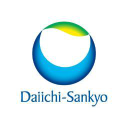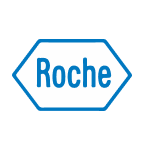DSNKY

Daiichi Sankyo Company, Limited
DSNKY
(1.8)27,50 USD
7.28% ROA
15.13% ROE
40.67x PER
9.286.559.073.599,00 USD
5.91% DER
0% Yield
14.24% NPM
Daiichi Sankyo Company, Limited Stock Analysis
Daiichi Sankyo Company, Limited Fundamental Analysis
Fundamental analysis in stock investing is like studying the foundation of a house before buying it. It involves looking at a company's financial health, like its earnings, assets, and debts, to determine if it's a good investment based on its fundamental strength and potential for growth.
| # | Analysis | Rating |
|---|---|---|
| 1 |
DER
The stock has a low debt to equity ratio (12%), which means it has a small amount of debt compared to the ownership it holds |
|
| 2 |
ROE
The stock's ROE falls within an average range (7.63%), demonstrating satisfactory profitability and efficiency in utilizing shareholders' equity. |
|
| 3 |
ROA
The stock's ROA (5.37%) indicates that it's doing well in making money from the things it owns. This makes it a good option to invest and make consistent profits. |
|
| 4 |
Assets Growth
Over the past three years, this company's revenue has consistently grown, demonstrating a positive financial trend that makes it an appealing choice. |
|
| 5 |
Graham Number
The company's Graham number suggests that its stock price is underestimated, implying that it may present a compelling investment opportunity. |
|
| 6 |
Buffet Intrinsic Value
Based on Warren Buffett's formula, the company's stock appears undervalued (44.332), presenting an attractive investment chance with its intrinsic value surpassing the current market price. |
|
| 7 |
PBV
The stock's high Price-to-Book Value (P/BV) ratio (5.45x) suggests it's overvalued, potentially making it an expensive investment. |
|
| 8 |
Revenue Growth
Regrettably, this company's revenue has shown no signs of growth over the past three years, suggesting limited potential for returns and making it a less appealing choice. |
|
| 9 |
Net Profit Growth
Throughout the last five years, this company's net profit has remained unchanged, indicating a lack of growth and making it a less favorable investment option. |
|
| 10 |
Dividend Growth
Investors should note the company's stagnant dividend growth over the past three years, indicating limited profitability and potentially diminishing returns. |
|
| 11 |
Dividend
Investors should note the absence of dividends from the company in the last three years, indicating potential financial challenges. |
Daiichi Sankyo Company, Limited Technical Analysis
Technical analysis in stock investing is like reading the patterns on a weather map to predict future weather conditions. It involves studying past stock price movements and trading volumes to make predictions about where a stock's price might go next, without necessarily looking at the company's financial health.
| # | Analysis | Recommendation |
|---|---|---|
| 1 | Awesome Oscillator | Buy |
| 2 | MACD | Buy |
| 3 | RSI | Hold |
| 4 | Stoch RSI | Sell |
Daiichi Sankyo Company, Limited Price Chart
Financial Statements
Financial statements are like report cards for companies. They show how much money a company makes (income statement), what it owns and owes (balance sheet), and where it spends its money (cash flow statement), helping stock investors understand if a company is healthy and worth investing in.
Income Statements
An income statement for a company is like a scoreboard for its profits and losses. It shows how much money the company made (revenue) and how much it spent to make that money (expenses), helping stock investors see if a company is making a profit or not.
Revenue in stock investing is the total amount of money a company earns from its sales, and it's a key factor that investors consider to assess a company's financial performance and growth potential.
| Year | Revenue | Growth |
|---|---|---|
| 2000 | 589.732.000.000 | |
| 2001 | 545.072.000.000 | -8.19% |
| 2002 | 548.893.000.000 | 0.7% |
| 2003 | 569.927.000.000 | 3.69% |
| 2004 | 596.345.000.000 | 4.43% |
| 2005 | 587.830.000.000 | -1.45% |
| 2006 | 925.918.000.000 | 36.51% |
| 2007 | 929.507.000.000 | 0.39% |
| 2008 | 880.120.000.000 | -5.61% |
| 2009 | 842.147.000.000 | -4.51% |
| 2010 | 952.105.000.000 | 11.55% |
| 2011 | 967.365.000.000 | 1.58% |
| 2012 | 938.677.000.000 | -3.06% |
| 2013 | 997.852.000.000 | 5.93% |
| 2014 | 1.118.241.000.000 | 10.77% |
| 2015 | 919.372.000.000 | -21.63% |
| 2016 | 986.446.000.000 | 6.8% |
| 2017 | 955.124.000.000 | -3.28% |
| 2018 | 960.195.000.000 | 0.53% |
| 2019 | 929.717.000.000 | -3.28% |
| 2020 | 981.793.000.000 | 5.3% |
| 2021 | 962.516.000.000 | -2% |
| 2022 | 1.044.892.000.000 | 7.88% |
| 2023 | 1.502.032.000.000 | 30.43% |
| 2023 | 1.278.478.000.000 | -17.49% |
| 2024 | 1.601.688.000.000 | 20.18% |
| 2025 | 1.744.700.000.000 | 8.2% |
Research and Development Expenses are the costs a company incurs to create and improve its products or services, which can be important for investors to evaluate a company's innovation and potential for future growth.
| Year | Research and Development Expenses | Growth |
|---|---|---|
| 2000 | 0 | |
| 2001 | 0 | 0% |
| 2002 | 0 | 0% |
| 2003 | 0 | 0% |
| 2004 | 0 | 0% |
| 2005 | 0 | 0% |
| 2006 | 158.716.000.000 | 100% |
| 2007 | 170.662.000.000 | 7% |
| 2008 | 163.472.000.000 | -4.4% |
| 2009 | 184.539.000.000 | 11.42% |
| 2010 | 196.802.000.000 | 6.23% |
| 2011 | 194.330.000.000 | -1.27% |
| 2012 | 185.052.000.000 | -5.01% |
| 2013 | 183.047.000.000 | -1.1% |
| 2014 | 191.212.000.000 | 4.27% |
| 2015 | 190.666.000.000 | -0.29% |
| 2016 | 208.656.000.000 | 8.62% |
| 2017 | 214.347.000.000 | 2.66% |
| 2018 | 236.046.000.000 | 9.19% |
| 2019 | 203.711.000.000 | -15.87% |
| 2020 | 197.465.000.000 | -3.16% |
| 2021 | 227.353.000.000 | 13.15% |
| 2022 | 260.228.000.000 | 12.63% |
| 2023 | 355.756.000.000 | 26.85% |
| 2023 | 341.570.000.000 | -4.15% |
| 2024 | 365.169.000.000 | 6.46% |
| 2025 | 402.856.000.000 | 9.35% |
General and Administrative Expenses are the costs a company incurs to run its day-to-day operations, such as office rent, salaries, and utilities, which investors consider to understand a company's overall efficiency and management effectiveness.
| Year | General and Administrative Expenses | Growth |
|---|---|---|
| 2000 | 212.235.000.000 | |
| 2001 | 234.293.000.000 | 9.41% |
| 2002 | 246.801.000.000 | 5.07% |
| 2003 | 261.335.000.000 | 5.56% |
| 2004 | 279.137.000.000 | 6.38% |
| 2005 | 289.015.000.000 | 3.42% |
| 2006 | 321.738.000.000 | 10.17% |
| 2007 | 357.330.000.000 | 9.96% |
| 2008 | 325.250.000.000 | -9.86% |
| 2009 | 0 | 0% |
| 2010 | 0 | 0% |
| 2011 | 0 | 0% |
| 2012 | 0 | 0% |
| 2013 | 0 | 0% |
| 2014 | 413.187.000.000 | 100% |
| 2015 | 331.195.000.000 | -24.76% |
| 2016 | 328.755.000.000 | -0.74% |
| 2017 | 302.475.000.000 | -8.69% |
| 2018 | 301.845.000.000 | -0.21% |
| 2019 | 277.695.000.000 | -8.7% |
| 2020 | 302.320.000.000 | 8.15% |
| 2021 | 333.079.000.000 | 9.23% |
| 2022 | 358.309.000.000 | 7.04% |
| 2023 | 564.136.000.000 | 36.49% |
| 2023 | 471.221.000.000 | -19.72% |
| 2024 | 636.997.000.000 | 26.02% |
| 2025 | 0 | 0% |
EBITDA stands for Earnings Before Interest, Taxes, Depreciation, and Amortization. It is a measure that helps stock investors analyze a company's profitability by looking at its earnings without considering certain expenses. This helps to get a clearer picture of the company's financial performance and its ability to generate cash flow.
| Year | EBITDA | Growth |
|---|---|---|
| 2000 | 142.713.000.000 | |
| 2001 | 87.790.000.000 | -62.56% |
| 2002 | 80.650.000.000 | -8.85% |
| 2003 | 105.693.000.000 | 23.69% |
| 2004 | 123.703.000.000 | 14.56% |
| 2005 | 114.114.000.000 | -8.4% |
| 2006 | 203.163.000.000 | 43.83% |
| 2007 | 170.748.000.000 | -18.98% |
| 2008 | 199.415.000.000 | 14.38% |
| 2009 | 636.000.000.000 | 68.65% |
| 2010 | 158.175.000.000 | -302.09% |
| 2011 | 181.152.000.000 | 12.68% |
| 2012 | 95.008.000.000 | -90.67% |
| 2013 | 149.050.000.000 | 36.26% |
| 2014 | 155.857.000.000 | 4.37% |
| 2015 | 125.119.000.000 | -24.57% |
| 2016 | 179.722.000.000 | 30.38% |
| 2017 | 142.871.000.000 | -25.79% |
| 2018 | 131.924.000.000 | -8.3% |
| 2019 | 137.910.000.000 | 4.34% |
| 2020 | 201.588.000.000 | 31.59% |
| 2021 | 134.261.000.000 | -50.15% |
| 2022 | 137.514.000.000 | 2.37% |
| 2023 | 281.148.000.000 | 51.09% |
| 2023 | 203.123.000.000 | -38.41% |
| 2024 | 271.129.000.000 | 25.08% |
| 2025 | 438.380.000.000 | 38.15% |
Gross profit is the money a company makes from selling its products or services after subtracting the cost of producing or providing them, and it is an important measure for investors to understand a company's profitability.
| Year | Gross Profit | Growth |
|---|---|---|
| 2000 | 354.948.000.000 | |
| 2001 | 322.083.000.000 | -10.2% |
| 2002 | 327.451.000.000 | 1.64% |
| 2003 | 341.173.000.000 | 4.02% |
| 2004 | 374.692.000.000 | 8.95% |
| 2005 | 373.941.000.000 | -0.2% |
| 2006 | 635.182.000.000 | 41.13% |
| 2007 | 664.306.000.000 | 4.38% |
| 2008 | 645.549.000.000 | -2.91% |
| 2009 | 627.750.000.000 | -2.84% |
| 2010 | 674.074.000.000 | 6.87% |
| 2011 | 685.688.000.000 | 1.69% |
| 2012 | 670.068.000.000 | -2.33% |
| 2013 | 684.195.000.000 | 2.06% |
| 2014 | 715.952.000.000 | 4.44% |
| 2015 | 596.285.000.000 | -20.07% |
| 2016 | 667.824.000.000 | 10.71% |
| 2017 | 605.751.000.000 | -10.25% |
| 2018 | 614.174.000.000 | 1.37% |
| 2019 | 565.112.000.000 | -8.68% |
| 2020 | 638.587.000.000 | 11.51% |
| 2021 | 624.227.000.000 | -2.3% |
| 2022 | 691.564.000.000 | 9.74% |
| 2023 | 1.123.088.000.000 | 38.42% |
| 2023 | 914.953.000.000 | -22.75% |
| 2024 | 1.186.366.000.000 | 22.88% |
| 2025 | 1.364.504.000.000 | 13.06% |
Net income in stock investing is like the money a company actually gets to keep as profit after paying all its bills, and it's an important measure to understand how well a company is doing financially.
| Year | Net Profit | Growth |
|---|---|---|
| 2000 | 42.817.000.000 | |
| 2001 | 42.478.000.000 | -0.8% |
| 2002 | 38.795.000.000 | -9.49% |
| 2003 | 33.845.000.000 | -14.63% |
| 2004 | 43.411.000.000 | 22.04% |
| 2005 | 48.282.000.000 | 10.09% |
| 2006 | 87.693.000.000 | 44.94% |
| 2007 | 78.550.000.000 | -11.64% |
| 2008 | 97.660.000.000 | 19.57% |
| 2009 | -215.499.000.000 | 145.32% |
| 2010 | 41.852.000.000 | 614.91% |
| 2011 | 70.121.000.000 | 40.31% |
| 2012 | 10.383.000.000 | -575.34% |
| 2013 | 66.621.000.000 | 84.41% |
| 2014 | 60.943.000.000 | -9.32% |
| 2015 | 322.119.000.000 | 81.08% |
| 2016 | 82.282.000.000 | -291.48% |
| 2017 | 53.466.000.000 | -53.9% |
| 2018 | 60.282.000.000 | 11.31% |
| 2019 | 93.409.000.000 | 35.46% |
| 2020 | 129.074.000.000 | 27.63% |
| 2021 | 75.958.000.000 | -69.93% |
| 2022 | 66.972.000.000 | -13.42% |
| 2023 | 159.972.000.000 | 58.14% |
| 2023 | 109.188.000.000 | -46.51% |
| 2024 | 200.731.000.000 | 45.6% |
| 2025 | 341.532.000.000 | 41.23% |
EPS, or earnings per share, is a measure that shows how much profit a company has earned for each outstanding share of its stock, and it is important for stock investors as it helps understand the profitability of a company and compare it with other companies in the market.
| Year | Earning per Share (EPS) | Growth |
|---|---|---|
| 2000 | 31 | |
| 2001 | 31 | 0% |
| 2002 | 29 | -10.71% |
| 2003 | 25 | -12% |
| 2004 | 33 | 21.88% |
| 2005 | 37 | 13.51% |
| 2006 | 40 | 5.13% |
| 2007 | 36 | -11.43% |
| 2008 | 45 | 22.22% |
| 2009 | -101 | 144.55% |
| 2010 | 20 | 631.58% |
| 2011 | 33 | 42.42% |
| 2012 | 5 | -725% |
| 2013 | 32 | 87.1% |
| 2014 | 29 | -10.71% |
| 2015 | 153 | 81.58% |
| 2016 | 40 | -289.74% |
| 2017 | 27 | -50% |
| 2018 | 30 | 13.33% |
| 2019 | 48 | 37.5% |
| 2020 | 66 | 27.27% |
| 2021 | 39 | -69.23% |
| 2022 | 35 | -14.71% |
| 2023 | 83 | 59.04% |
| 2023 | 57 | -48.21% |
| 2024 | 105 | 46.15% |
| 2025 | 178 | 41.57% |
Cashflow Statements
Cashflow statements show the movement of money in and out of a company, helping stock investors understand how much money a company makes and spends. By examining cashflow statements, investors can assess if a company is generating enough cash to pay its bills, invest in growth, and provide returns to stockholders.
Free cash flow is the leftover cash that a company generates after covering its operating expenses and capital expenditures, which is important for stock investors as it shows how much money a company has available to invest in growth, pay dividends, or reduce debt.
| Year | Free Cashflow | Growth |
|---|---|---|
| 2003 | 42.245.000.000 | |
| 2004 | 22.351.000.000 | -89.01% |
| 2005 | 66.982.000.000 | 66.63% |
| 2006 | 84.174.000.000 | 20.42% |
| 2007 | 63.478.000.000 | -32.6% |
| 2008 | 15.081.000.000 | -320.91% |
| 2009 | 33.781.000.000 | 55.36% |
| 2010 | 99.078.000.000 | 65.9% |
| 2011 | 105.007.000.000 | 5.65% |
| 2012 | 28.869.000.000 | -263.74% |
| 2013 | 50.385.000.000 | 42.7% |
| 2014 | -17.210.000.000 | 392.77% |
| 2015 | 48.146.000.000 | 135.75% |
| 2016 | 97.860.000.000 | 50.8% |
| 2017 | 83.272.000.000 | -17.52% |
| 2018 | 70.431.000.000 | -18.23% |
| 2019 | 25.420.000.000 | -177.07% |
| 2020 | 144.036.000.000 | 82.35% |
| 2021 | 128.114.000.000 | -12.43% |
| 2022 | 62.544.000.000 | -104.84% |
| 2023 | -40.889.000.000 | 252.96% |
| 2023 | 47.148.000.000 | 186.72% |
| 2024 | 476.467.000.000 | 90.1% |
| 2025 | -131.221.000.000 | 463.1% |
Operating cash flow represents the cash generated or consumed by a company's day-to-day operations, excluding external investing or financing activities, and is crucial for stock investors as it shows how much cash a company is generating from its core business operations.
| Year | Operating Cashflow | Growth |
|---|---|---|
| 2003 | 69.167.000.000 | |
| 2004 | 71.207.000.000 | 2.86% |
| 2005 | 96.703.000.000 | 26.37% |
| 2006 | 132.760.000.000 | 27.16% |
| 2007 | 106.430.000.000 | -24.74% |
| 2008 | 66.667.000.000 | -59.64% |
| 2009 | 78.383.000.000 | 14.95% |
| 2010 | 130.235.000.000 | 39.81% |
| 2011 | 141.139.000.000 | 7.73% |
| 2012 | 92.569.000.000 | -52.47% |
| 2013 | 129.247.000.000 | 28.38% |
| 2014 | 37.304.000.000 | -246.47% |
| 2015 | 142.776.000.000 | 73.87% |
| 2016 | 174.281.000.000 | 18.08% |
| 2017 | 136.234.000.000 | -27.93% |
| 2018 | 108.439.000.000 | -25.63% |
| 2019 | 92.033.000.000 | -17.83% |
| 2020 | 196.601.000.000 | 53.19% |
| 2021 | 192.207.000.000 | -2.29% |
| 2022 | 139.226.000.000 | -38.05% |
| 2023 | -18.146.000.000 | 867.25% |
| 2023 | 114.514.000.000 | 115.85% |
| 2024 | 599.258.000.000 | 80.89% |
| 2025 | -110.042.000.000 | 644.57% |
Capex, short for capital expenditures, refers to the money a company spends on acquiring or upgrading tangible assets like buildings, equipment, or technology, which is important for stock investors as it indicates how much a company is investing in its infrastructure to support future growth and profitability.
| Year | Capital Expenditure | Growth |
|---|---|---|
| 2003 | 26.922.000.000 | |
| 2004 | 48.856.000.000 | 44.9% |
| 2005 | 29.721.000.000 | -64.38% |
| 2006 | 48.586.000.000 | 38.83% |
| 2007 | 42.952.000.000 | -13.12% |
| 2008 | 51.586.000.000 | 16.74% |
| 2009 | 44.602.000.000 | -15.66% |
| 2010 | 31.157.000.000 | -43.15% |
| 2011 | 36.132.000.000 | 13.77% |
| 2012 | 63.700.000.000 | 43.28% |
| 2013 | 78.862.000.000 | 19.23% |
| 2014 | 54.514.000.000 | -44.66% |
| 2015 | 94.630.000.000 | 42.39% |
| 2016 | 76.421.000.000 | -23.83% |
| 2017 | 52.962.000.000 | -44.29% |
| 2018 | 38.008.000.000 | -39.34% |
| 2019 | 66.613.000.000 | 42.94% |
| 2020 | 52.565.000.000 | -26.73% |
| 2021 | 64.093.000.000 | 17.99% |
| 2022 | 76.682.000.000 | 16.42% |
| 2023 | 22.743.000.000 | -237.17% |
| 2023 | 67.366.000.000 | 66.24% |
| 2024 | 122.791.000.000 | 45.14% |
| 2025 | 21.179.000.000 | -479.78% |
Balance Sheet
Balance sheets provide a snapshot of a company's financial health and its assets (such as cash, inventory, and property) and liabilities (like debts and obligations) at a specific point in time. For stock investors, balance sheets help assess the company's overall worth and evaluate its ability to meet financial obligations and support future growth.
Equity refers to the ownership interest or stake that shareholders have in a company, representing their claim on its assets and earnings after all debts and liabilities are paid.
| Year | Equity | Growth |
|---|---|---|
| 2000 | 615.011.000.000 | |
| 2001 | 668.318.000.000 | 7.98% |
| 2002 | 652.220.000.000 | -2.47% |
| 2003 | 667.088.000.000 | 2.23% |
| 2004 | 691.437.000.000 | 3.52% |
| 2005 | 726.021.000.000 | 4.76% |
| 2006 | 1.249.139.000.000 | 41.88% |
| 2007 | 1.272.148.000.000 | 1.81% |
| 2008 | 1.244.513.000.000 | -2.22% |
| 2009 | 888.617.000.000 | -40.05% |
| 2010 | 889.508.000.000 | 0.1% |
| 2011 | 887.702.000.000 | -0.2% |
| 2012 | 832.749.000.000 | -6.6% |
| 2013 | 915.743.000.000 | 9.06% |
| 2014 | 1.007.527.000.000 | 9.11% |
| 2015 | 1.307.041.000.000 | 22.92% |
| 2016 | 1.233.521.000.000 | -5.96% |
| 2017 | 1.171.428.000.000 | -5.3% |
| 2018 | 1.133.040.000.000 | -3.39% |
| 2019 | 1.249.704.000.000 | 9.34% |
| 2020 | 1.306.273.000.000 | 4.33% |
| 2021 | 1.272.053.000.000 | -2.69% |
| 2022 | 1.350.872.000.000 | 5.83% |
| 2023 | 1.445.854.000.000 | 6.57% |
| 2023 | 1.594.002.000.000 | 9.29% |
| 2024 | 1.688.602.000.000 | 5.6% |
| 2025 | 1.720.849.000.000 | 1.87% |
Assets represent the valuable resources that a company owns, such as cash, inventory, property, and equipment, and understanding a company's assets helps investors assess its value and potential for generating future profits.
| Year | Assets | Growth |
|---|---|---|
| 2000 | 921.662.000.000 | |
| 2001 | 964.902.000.000 | 4.48% |
| 2002 | 916.305.000.000 | -5.3% |
| 2003 | 915.792.000.000 | -0.06% |
| 2004 | 927.244.000.000 | 1.24% |
| 2005 | 976.230.000.000 | 5.02% |
| 2006 | 1.596.127.000.000 | 38.84% |
| 2007 | 1.636.835.000.000 | 2.49% |
| 2008 | 1.487.889.000.000 | -10.01% |
| 2009 | 1.494.599.000.000 | 0.45% |
| 2010 | 1.489.510.000.000 | -0.34% |
| 2011 | 1.480.240.000.000 | -0.63% |
| 2012 | 1.518.479.000.000 | 2.52% |
| 2013 | 1.644.071.000.000 | 7.64% |
| 2014 | 1.854.037.000.000 | 11.32% |
| 2015 | 1.982.286.000.000 | 6.47% |
| 2016 | 1.900.522.000.000 | -4.3% |
| 2017 | 1.914.979.000.000 | 0.75% |
| 2018 | 1.897.754.000.000 | -0.91% |
| 2019 | 2.088.051.000.000 | 9.11% |
| 2020 | 2.105.619.000.000 | 0.83% |
| 2021 | 2.085.178.000.000 | -0.98% |
| 2022 | 2.221.402.000.000 | 6.13% |
| 2023 | 2.508.889.000.000 | 11.46% |
| 2023 | 2.649.101.000.000 | 5.29% |
| 2024 | 3.461.135.000.000 | 23.46% |
| 2025 | 3.437.132.000.000 | -0.7% |
Liabilities refer to the financial obligations or debts that a company owes to creditors or external parties, and understanding a company's liabilities is important for investors as it helps assess the company's financial risk and ability to meet its obligations.
| Year | Liabilities | Growth |
|---|---|---|
| 2000 | 0 | |
| 2001 | 0 | 0% |
| 2002 | 0 | 0% |
| 2003 | 248.704.000.000 | 100% |
| 2004 | 235.807.000.000 | -5.47% |
| 2005 | 250.209.000.000 | 5.76% |
| 2006 | 346.988.000.000 | 27.89% |
| 2007 | 364.687.000.000 | 4.85% |
| 2008 | 242.998.000.000 | -50.08% |
| 2009 | 605.982.000.000 | 59.9% |
| 2010 | 600.002.000.000 | -1% |
| 2011 | 592.538.000.000 | -1.26% |
| 2012 | 685.730.000.000 | 13.59% |
| 2013 | 728.328.000.000 | 5.85% |
| 2014 | 846.510.000.000 | 13.96% |
| 2015 | 675.245.000.000 | -25.36% |
| 2016 | 667.001.000.000 | -1.24% |
| 2017 | 743.551.000.000 | 10.3% |
| 2018 | 764.713.000.000 | 2.77% |
| 2019 | 838.346.000.000 | 8.78% |
| 2020 | 799.345.000.000 | -4.88% |
| 2021 | 813.125.000.000 | 1.69% |
| 2022 | 870.530.000.000 | 6.59% |
| 2023 | 1.063.035.000.000 | 18.11% |
| 2023 | 1.055.099.000.000 | -0.75% |
| 2024 | 1.763.115.000.000 | 40.16% |
| 2025 | 1.716.283.000.000 | -2.73% |
Daiichi Sankyo Company, Limited Financial Ratio (TTM)
Valuation Metrics
- Revenue per Share
- 880.63
- Net Income per Share
- 119.59
- Price to Earning Ratio
- 40.67x
- Price To Sales Ratio
- 5.5x
- POCF Ratio
- 17.4
- PFCF Ratio
- 22.22
- Price to Book Ratio
- 5.42
- EV to Sales
- 5.09
- EV Over EBITDA
- 25.47
- EV to Operating CashFlow
- 16.03
- EV to FreeCashFlow
- 20.53
- Earnings Yield
- 0.02
- FreeCashFlow Yield
- 0.05
- Market Cap
- 9.286,56 Bil.
- Enterprise Value
- 8.582,92 Bil.
- Graham Number
- 1554.7
- Graham NetNet
- -146.33
Income Statement Metrics
- Net Income per Share
- 119.59
- Income Quality
- 1.98
- ROE
- 0.14
- Return On Assets
- 0.08
- Return On Capital Employed
- 0.11
- Net Income per EBT
- 0.76
- EBT Per Ebit
- 1.08
- Ebit per Revenue
- 0.17
- Effective Tax Rate
- 0.24
Margins
- Sales, General, & Administrative to Revenue
- 0.3
- Research & Developement to Revenue
- 0.23
- Stock Based Compensation to Revenue
- 0
- Gross Profit Margin
- 0.76
- Operating Profit Margin
- 0.17
- Pretax Profit Margin
- 0.19
- Net Profit Margin
- 0.14
Dividends
- Dividend Yield
- 0
- Dividend Yield %
- 0
- Payout Ratio
- 0.42
- Dividend Per Share
- 0
Operating Metrics
- Operating Cashflow per Share
- 279.51
- Free CashFlow per Share
- 218.19
- Capex to Operating CashFlow
- 0.22
- Capex to Revenue
- 0.07
- Capex to Depreciation
- 1.89
- Return on Invested Capital
- 0.11
- Return on Tangible Assets
- 0.07
- Days Sales Outstanding
- 117.8
- Days Payables Outstanding
- 465.26
- Days of Inventory on Hand
- 389.53
- Receivables Turnover
- 3.1
- Payables Turnover
- 0.78
- Inventory Turnover
- 0.94
- Capex per Share
- 61.32
Balance Sheet
- Cash per Share
- 420,35
- Book Value per Share
- 898,28
- Tangible Book Value per Share
- 747.46
- Shareholders Equity per Share
- 898.28
- Interest Debt per Share
- 63.18
- Debt to Equity
- 0.06
- Debt to Assets
- 0.03
- Net Debt to EBITDA
- -2.09
- Current Ratio
- 3.11
- Tangible Asset Value
- 1.431,92 Bil.
- Net Current Asset Value
- 345,56 Bil.
- Invested Capital
- 2136454000000
- Working Capital
- 1.399,18 Bil.
- Intangibles to Total Assets
- 0.08
- Average Receivables
- 464,19 Bil.
- Average Payables
- 309,95 Bil.
- Average Inventory
- 441404500000
- Debt to Market Cap
- 0.01
Dividends
Dividends in stock investing are like rewards that companies give to their shareholders. They are a portion of the company's profits distributed to investors, typically in the form of cash payments, as a way for them to share in the company's success.
| Year | Dividends | Growth |
|---|---|---|
| 2022 | 0 | |
| 2023 | 0 | 0% |
Daiichi Sankyo Company, Limited Profile
About Daiichi Sankyo Company, Limited
Daiichi Sankyo Company, Limited researches and develops, manufactures, imports, markets, and sells pharmaceutical products worldwide. The company offers trastuzumab deruxtecan, an anti-cancer agent and anti-HER2 antibody drug conjugate; mirogabalin for pain treatment; teneligliptin/canagliflozin for type 2 diabetes mellitus treatment; lacosamide anti-epileptic agent; prasugrel, an antiplatelet agent; denosumab for osteoporosis and bone disorders; teneligliptin for type 2 diabetes mellitus treatment; edoxaban, an anticoagulant; esomeprazole for ulcer treatment; memantine for treating Alzheimer's disease; and laninamivir for anti-influenza treatment. It also provides olmesartan, an antihypertensive agent; levofloxacin, an antibacterial agent; pravastatin for hypercholesterolemia treatment; and loxoprofen, an anti-inflammatory analgesic. In addition, the company offers colesevelam for treating hypercholesterolemia and type 2 diabetes mellitus treatment; and ferric carboxymaltose and iron sucrose injections for treating anemia. Further, it provides Lulu, a combination cold remedy; Loxonin S, an antipyretic analgesic /anti-inflammatory analgesic; Transino for melasma improvement and treating against spots and freckles; Minon, a skincare product; and Breath Labo and Clean Dental oral care products, as well as Silodosin for dysuria; Gefitinib for malignant tumours; Bicalutamide for prostate cancer; and Tamoxifen, an anti-breast cancer agent. Additionally, the company offers adsorbed cell culture-derived influenza, influenza HA, measles rubella combined, and mumps vaccines. It also provides pharmaceuticals and drugs for animals, cosmetics, medical equipment, food products, drinking water, active pharmaceutical ingredients, and intermediates. It has collaboration with Guardant Health to develop Guardant360 CDx as a companion diagnostic for Enhertu in advanced metastatic non-small cell lung cancer. The company was founded in 1899 and is headquartered in Tokyo, Japan.
- CEO
- Mr. Sunao Manabe D.V.M., Ph.D
- Employee
- 18.726
- Address
-
3-5-1, Nihonbashi-honcho
Tokyo, 103-8426
Daiichi Sankyo Company, Limited Executives & BODs
| # | Name | Age |
|---|---|---|
| 1 |
Mr. Takashi Fukuoka D.V.M., Ph.D. Senior Managing Executive Officer, Global Head of Corporate Strategy, Chief Strategy Officer & Director |
70 |
| 2 |
Hiroto Kashiwase Executive Officer & Head of Technology Division |
70 |
| 3 |
Naoto Tsukaguchi Gen. Counsel, Corporation Officer, Head of Global Legal & IP and Vice President of Leg. Aff. Dept. |
70 |
| 4 |
Matt Allegrucci Head of Global Compliance & Risk Management and Chief Compliance Officer |
70 |
| 5 |
Tomohiro Kodama General Manager of Finance & Accounting Department |
70 |
| 6 |
Mr. Koji Ogawa Managing Ex. Officer, Head of Corporate Planning & Mgt. and Chief Financial Officer |
70 |
| 7 |
Mr. Hiroyuki Okuzawa President, Chief Operating Officer & Representative Director |
70 |
| 8 |
Kentaro Asakura Vice President of Corporate Communications Department |
70 |
| 9 |
Dr. Shoji Hirashima Senior Managing Executive Officer, Head of Japan Business Unit & Representative Director |
70 |
| 10 |
Mr. Sunao Manabe D.V.M., Ph.D. Group Chief Executive Officer & Executive Chairperson |
70 |














